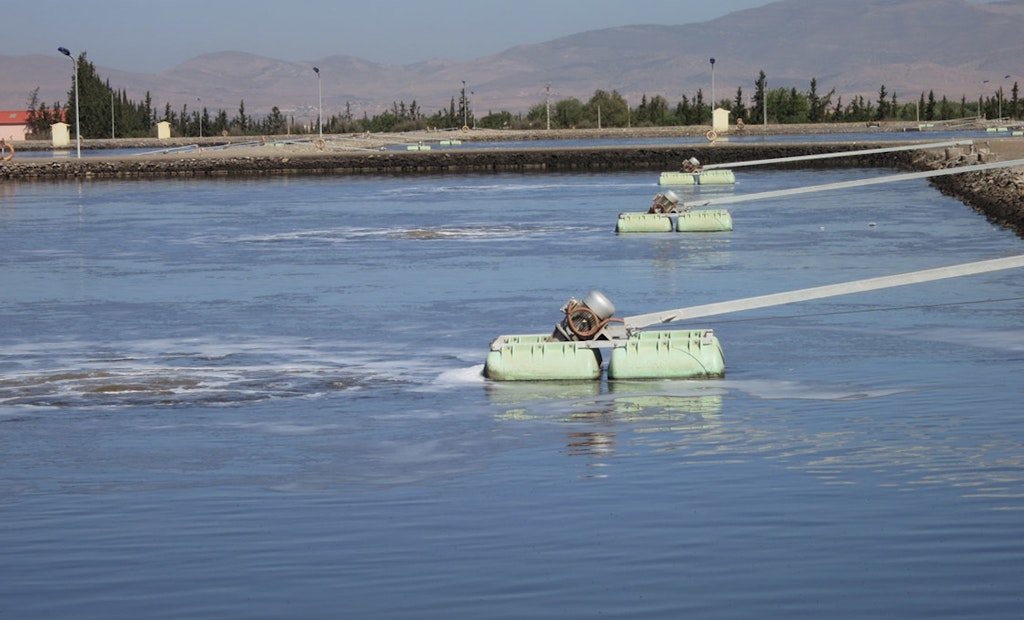Interested in Treatment?
Get Treatment articles, news and videos right in your inbox! Sign up now.
Treatment + Get AlertsMunicipal and industrial wastewater plants share many challenges: aging infrastructure, energy efficiency demands, larger plant flow compared to capacity, stricter EPA effluent regulations, limited workforces, and current equipment reaching the end of its lifecycle. Both segments aim to process wastewater by minimizing input and maximizing biological processes to remove organics and return it to the receiving stream. Aeration and mixing have been used for decades to process wastewater influent. The best solution is not a one-size-fits-all approach. What works for one plant may not necessarily work for another.
Many factors drive municipalities and industrial segments to seek more efficient solutions when choosing the right equipment for a particular site. Depending on the main objective, current footprint, influent loading, location or change in permit levels, each plant’s needs can vary widely. Plants may need to completely replace their equipment or add additional capacity to augment their systems. Therefore, the best solution to upgrading or replacing equipment while staying within budget is to work closely with an established applied engineering company that provides customized solutions for individual needs.
What are the issues?
When choosing a new or supplemental system, plant engineers must first consider their goals compared to the current process, the plant’s footprint, and budgetary requirements. They need to determine if a temporary or a permanent solution is required based on their situation. An applied engineering company in aeration and mixing can create a customized solution based on the plant’s objective, basin geometry, influent loading, complex mooring challenges, energy efficiency requirements, and unique biological, civil, mechanical, or electrical needs. They may also need to consider additional parameters, such as when a basin cannot be taken offline, the equipment must be installed wet, or the client does not want a permanent infrastructure.
Are new systems cost-effective?
Aeration consumes approximately 55%-70% of a plant’s energy for municipal and industrial plants. Having energy-efficient equipment saves costs, and, in some cases, plants may be eligible for certain energy grants. One way to reduce energy costs is to operate aeration equipment on variable-frequency drives, which vary the output or speed of the aeration device to coincide with the plant’s loading. Another option is to design the basin with dissolved oxygen probes and additional timers in the control panel that cycle the aeration equipment on and off when they meet required oxygen limits for influent loading or during peak flows.
Additionally, preventive maintenance on aeration equipment to keep it at optimum performance saves energy. The equipment manufacturer’s operations and maintenance guidelines set lubrication schedules and when to upgrade replacement parts. Also, when a plant’s workforce is limited, choosing equipment that is easy to maintain optimizes performance while maximizing the biological process.
Directional aeration and mixing
One equipment choice that may be the best fit for your design application is the OxyStar directional aspirator from Aqua-Aerobic Systems. It combines directional mixing with oxygen transfer and can be used alone or as supplemental aeration. This equipment is ideal for shallow basins, channels, especially oxidation ditches, and lagoon circulation. The OxyStar directional aspirator offers ease of use and maintenance and can be installed wet. It is lower in capital costs compared to other aeration equipment, has no misting, and requires minimal installation effort. Installation usually requires only a crane plus mooring and electrical cable.
The Turbostar directional mixer is another option that is ideal when directional mixing is all you need. Like the Oxystar, it is optimal for channels and circulating lagoon basins. The TurboStar may be the right choice for your application where directional mixing is required. When exploring solutions to specific wastewater challenges, choosing the right applied engineering partnership is indispensable to accomplishing your goals.
About the author
Loryn Martin is the product manager for aeration and mixing with Aqua-Aerobic Systems, Inc.
Visit the Aqua-Aerobic Systems Storefront






